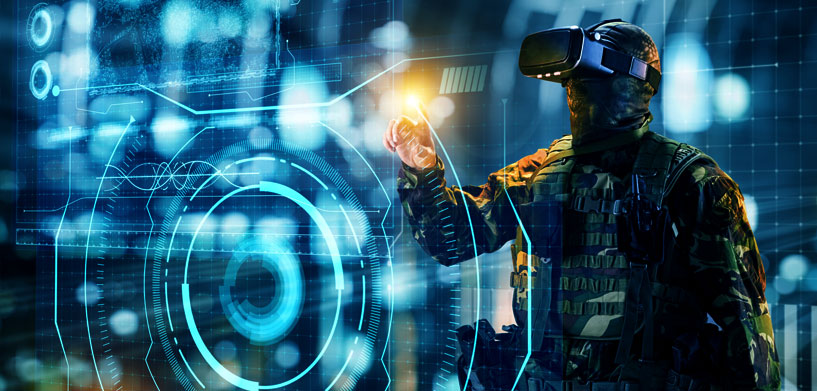Defense and intelligence agencies face evolving threats, including increasing geopolitical tensions and terrorism. Incorrect or outdated information can lead to grave mistakes on the front lines.
With the proliferation of devices connected to the Internet of Military Things (IoMT), unmanned aerial vehicles (UAVs) and artificial intelligence (AI), there has been an explosion of data. This makes reliable C6ISR (command, control, communications, computers, cyber defense and combat systems and intelligence, surveillance and reconnaissance) systems critical for militaries to achieve the necessary level of real-time situational awareness.
Defense decisions are driven by information extracted from data. Digital solutions help facilitate informed decision-making at every stage of combat.
Modernize to increase performance, resilience and decision-making
We asked Richard Goodman, EMEA defence lead for Hexagon’s Safety, Infrastructure & Geospatial division, about the impacts of modernization on defense and intelligence organizations and how to achieve the best outcomes.
“Preparation, cooperation and commitment are the three most important factors to move defense into the future,” said Goodman. “Obviously militaries need to be prepared with plans, supplies and mental attitudes to fight whatever is next. Whether their cooperation is international or intranational between forces, they need the means to easily collaborate. Even with good preparation any plan will fail if communication amongst allies is halfhearted.”
He continued, “Modernization should be a digitalization of current practices while gaining improvements in performance, resilience and decision speed. Forces should not just digitalize what they do already, they should optimize them for digital use and benefit in ways such as lessening workload on analysts.”
An example of modern technology in action
Goodman shared a real-world scenario to illustrate how digitalization can strengthen military operations. Specifically, surveillance of a border area with commercial satellite imagery (CSI) as the data source.
“Many CSI sources may capture new scenes daily. Analysts need to look for change in these scenes, of which there may be many along a border,” said Goodman. “Digitalization means an automated workflow can be run for the CSI data as it’s received. The workflow can recognize new data for a certain geographic area, pull historical data from the catalog, carry out change detection and compare results to previous changes. If the change is deemed significant, stakeholders can be notified and sent to a populated, browser-based dashboard to analyze changes and decide actions.”
Transform complex data for a tactical advantage
“Defense and intelligence agencies are faced with many challenges, such as analyzing and managing geospatial intelligence, the changing nature of threats and limited resources and capacity. Agencies need to be able to efficiently collect, organize, process and archive massive amounts of disparate data such as CSI, terrain, OSINT and IoMT sources. Whilst many of these are already digital, the slow adoption of digital first workflows hinders the possible benefits of digitalization.” said Goodman.
From battlefields to command centers, location intelligence and geospatial platforms help defense agencies transform complex data into informed decision-making for a tactical advantage.
- GEOINT software and solutions: For mapping and imagery analysis, data production and exploitation of vast amounts of geospatial and non-geospatial data.
- C6ISR solutions: From battlefield operations to command and control centers, C6ISR solutions can solve situational awareness challenges.
- Mapping and charting: From improving traditional cartography to enabling dynamic map services, mapping agencies can modernize their operations.
- Data management and sharing: Solutions empower in-theatre operators and nontechnical users to rapidly share and visualize mission-critical geospatial intelligence.
Discover how Hexagon technologies help defense organizations win on the digital battlefield.















